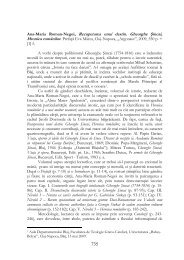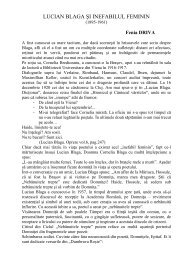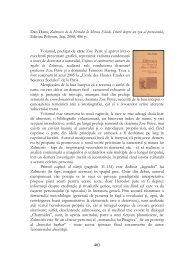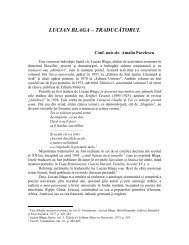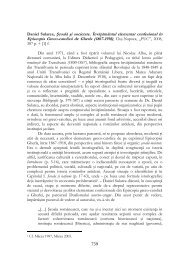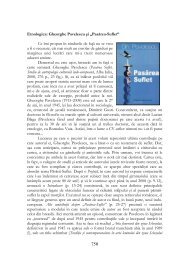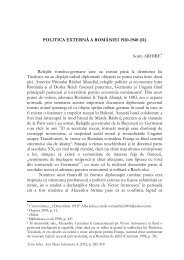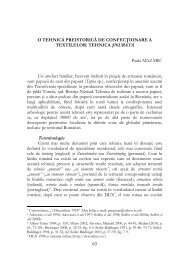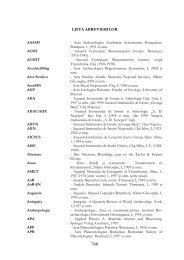MEDIEVAL ROWEL SPURS IN THE COLLECTION OF THE “IOAN ...
MEDIEVAL ROWEL SPURS IN THE COLLECTION OF THE “IOAN ...
MEDIEVAL ROWEL SPURS IN THE COLLECTION OF THE “IOAN ...
Create successful ePaper yourself
Turn your PDF publications into a flip-book with our unique Google optimized e-Paper software.
Ovidiu Ghenescu<br />
Sebeş in 1968 by primary school teacher Schmidt from Dobârca. 3 The piece<br />
is in a poor state of conservation, both shank and rowel being strongly<br />
corroded. The oval shaped shank tapers towards the tip, measures 4.2 cm in<br />
length and approximately half of it (2.2 cm) is cleft to hold the rowel. The<br />
tips are shaped into small perforated knobs to which the rowel axle is<br />
attached. The now strongly corroded rowel apparently used to have eight<br />
teeth, the maximum known length of a teeth being 1 cm. The rowel is<br />
approximately 3 cm wide in diameter. The arms of the heel band are<br />
semioval in section, on the same axis with the shank and slightly curved<br />
upwards. The arms are slightly wider at their junction point. The maximum<br />
length of the arms is 12 cm and their spread is max. 9 cm. The arms end in<br />
a rectangular-shaped plate with rounded edges and two round holes.<br />
3. Iron rowel spur (fig. 2/2; 4/2). Unknown findspot. Previously kept<br />
in the old collection of the German Gymnasium in Sebeş, it went into the<br />
museum collection at the end of 1957, the year the institution was founded. 4<br />
The spur is in a pretty poor state of conservation, both the shank and the<br />
rowel are corroded. The oval shank with an overall length of 5.3 cm, tapers<br />
to the tip and is vertically oblique to the arms. A 3.1 cm-long stretch of it (a<br />
little more than half its total length) is cleft to hold the rowel. The tips of<br />
the shank thicken into small perforated knobs to which the rowel axle is<br />
attached. The rowel initially had six teeth out of which five still exist, it is<br />
3.2 cm wide in diameter and the length a tooth is approximately 1 cm. Small<br />
bumps are alternately arranged between the rowel teeth and most probably<br />
represent another 6 atrophied teeth. The arms of the heel band are semioval<br />
in section, and shaped like a pointed arch to the horizontal axis. The arms<br />
are slightly wider at their junction point. The maximum length of the arms<br />
is 9 cm, and their spread is max. 8.1 cm. The arms end in a rectangularshaped<br />
plate with rounded edges and two round holes. Two hooks, one for<br />
each perforation, are attached to one of the arms and one hook at the other<br />
arm. The hooks are shaped like the letter S with closed ends, are between 3-<br />
3.6 cm long and 0.2-0.3 thick. The central part of the hooks is flattened off<br />
in the shape of round pills with a diameter of 1.2-1.4 cm.<br />
3 The piece was accessioned on 03.01.1968 under nr. 4210 marked in white paint on one of<br />
the arms. Although the accession records say “spurs” from Dobârca, it is highly unlikely to<br />
have been more than one piece, standing proof thereof is the single accession number.<br />
4 The piece was recorded in the accession book of the museum in Sebeş on 5.12.1957<br />
under nr. 78. The same number is marked in white paint on one of the arms, although the<br />
record specifies the marked number is 247. It is however impossible to be a different spur<br />
as our item matches the description in the museum records entirely.<br />
244



